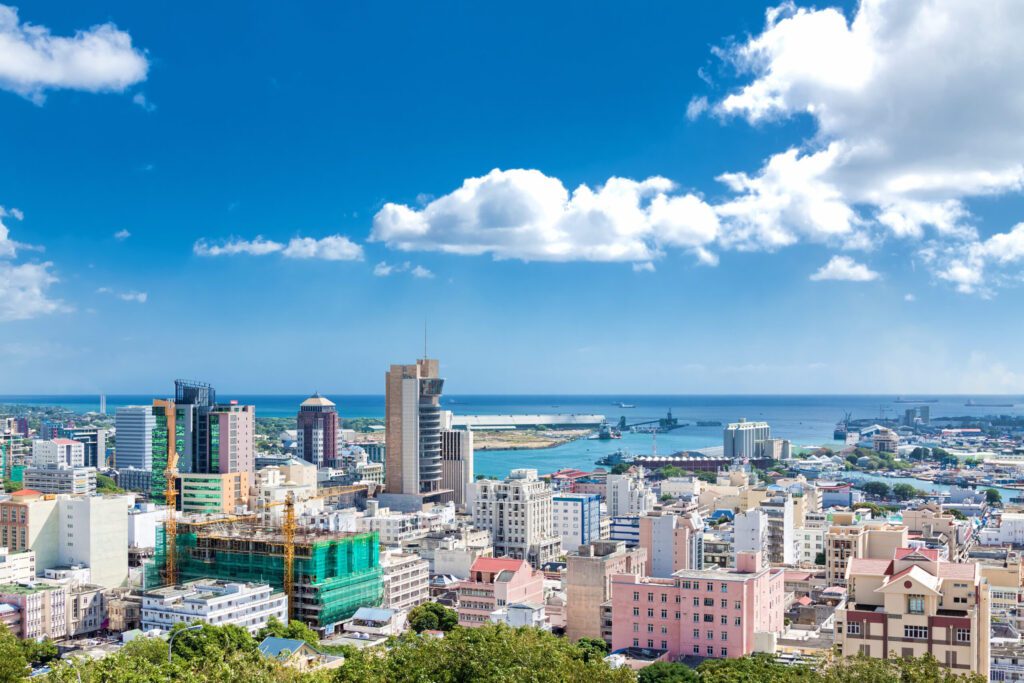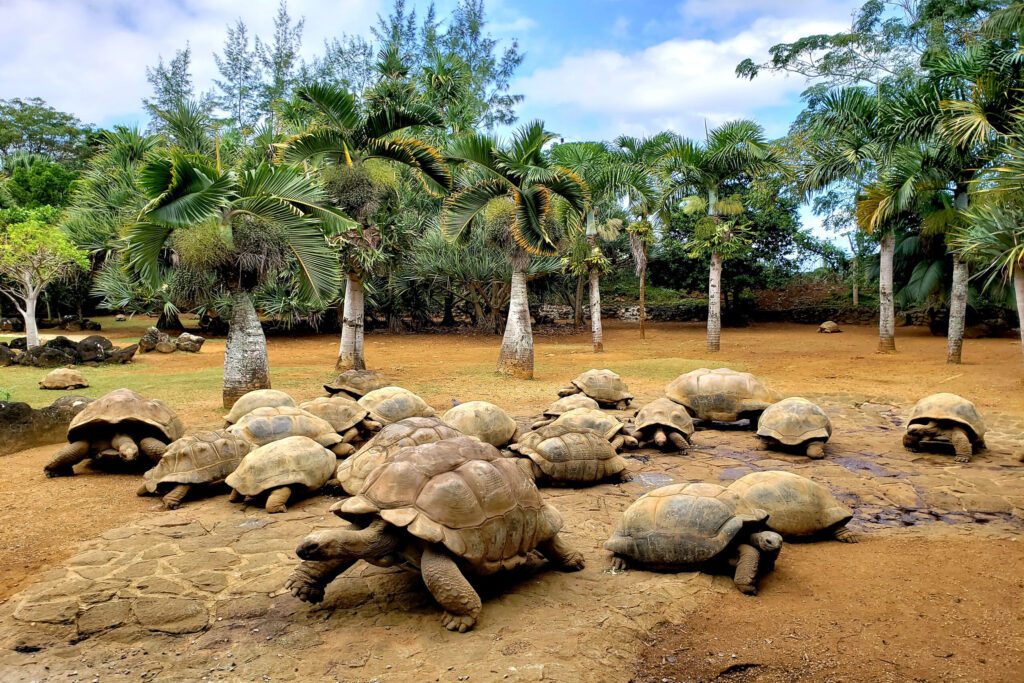Visit Mauritius
Places Of Interest To Explore Around The Island
Use our interactive mapping system to discover the various places of interest by clicking on the circular spots.

Red Roof Chapel

The red-roofed Notre-Dame Cathedral, built during the French colonial period, is a famous landmark located in the northern part of Mauritius. The cathedral is situated by the sea, the blue of the sky and the white of the clouds, making the red-roofed cathedral even more beautiful.
Grand Baie

It is a harbor town on the North Coast. There are many restaurants, bars, and souvenir shops along the shore, making it a popular destination for tourists. The bay is surrounded by land on three sides, with a winding white sandy beach along the harbor. The sea is calm like a lake, and the color of the water is unbelievably beautiful. It is a lovely place for snorkeling and deep diving.
SSR Botanical Garden

Originally built as a governor's garden during the French colonial period, it has now evolved into a renowned national botanical garden in the southern hemisphere. The park is famous for its collection of unique plants and animals from around the world. With a wide variety of plant species, the most captivating feature is the pond filled with Amazon water lilies.
Port Louis

Located in the western part of Mauritius, it is the largest city in Mauritius and serves as the main port, educational, administrative, and industrial center. The oldest horse racecourse in the southern hemisphere is also situated in the city. The traditional markets and the Caudan Waterfront are popular places for tourists to buy handmade crafts and local snacks.
Casela Nature Park

Covering 14 hectares, the Bird Park provides a warm home for over 1,500 species of birds, as well as lions, zebras, tortoises, long-tailed monkeys, tigers, and many other animals. It is often referred to as "Little Kenya." Visitors can freely explore the park or participate in optional activities such as close encounters with animals on a four-wheel drive, high-altitude zip-lining, or thrilling experiences like walking with lions.
Trou Aux Cerfs

Mauritius is an island formed by underwater volcanic eruptions around 8 million years ago. The crater of Trou Aux Cerfs is the most representative crater in Mauritius. It is located above the city of Curepipe in the central plateau of Mauritius and has a depth of approximately 100 meters. Due to its long period of inactivity, the bottom of the volcanic crater has formed a natural lake, surrounded by lush tall trees.
Underwaterfall Illusion

The underwater waterfall is not a real waterfall. The waterfall is not formed by the flowing sea water, but the white sand and the soft mud on the seabed. Through the refraction and reflection of light, the sand and the sea create a gradient from blue to green. A seemingly bottomless gap, forming a fantastic landscape of an underwater waterfall.
Le Morne Mountain

Listed as one of the world cultural heritage sites, it primarily serves as a memorial to the difficult period of slavery in Mauritius. Due to the protection provided by the forests and nearly impassable slopes of Montagne du Morne, many escaped slaves chose to seek refuge here. Although the emancipation of slaves was later enacted, a tragic misunderstanding led to many slaves choosing to jump from Montagne du Morne.
Ile aux Cerfs

It is an island located on the east side of Mauritius. The island is home to the fourth largest golf course in the world and offers a diverse range of water-based activities, on the surface and underwater, such as parasailing, jet skiing, underwater walking, and banana boat rides. In the middle of the island, there is a picturesque lagoon with white fine sandy beaches and a dreamy river, making it a sought-after destination for many people.
La Vanille Nature Park

This park is a natural reserve area, with over 3.5 hectares of lush green space. It is also the world's largest captive breeding center for Aldabra giant tortoises. You can also find Nile crocodiles from Madagascar. The feeling of being surrounded by dozens of tortoises in the park is truly awe-inspiring.
Chamarel Seven Coloured Earth

It is known as one of the world's wonders. Its formation is a result of volcanic eruptions from different periods millions of years ago. The oxidized lava produced various colors through sunlight refraction. Different areas exhibit different colors depending on the angles and positions of the sun. It is recommended to capture the scenery from various locations.
Grand Bassin

The Sacred Lake, one of the two natural lakes in Mauritius. Along the lake, there is an Indian temple dedicated to the goddess Ganga, where many followers of Hinduism in Mauritius gather to worship Lord Shiva during the festival of Maha Shivaratri. This place has been an important pilgrimage site for Hindu devotees for nearly 150 years. Local descendants of Indians believe that there is an underground current in this lake that connects to the Ganges River in India.
Maconde

Located on the southwest side, there is a prominent small rocky hill. On top of it, there are stone steps that can be climbed to overlook the magnificent South Indian Ocean coastline. Chinese tourists refer to it as "Tianya Haijiao," which translates to "the end of the sky and the corner of the sea." Standing on the observation deck, one can see an endless view of the beautiful scenery, with a blue coastline and lush green mountains, which instantly brings a sense of tranquility and joy.
Chamarel Waterfall

Influenced by volcanic terrain, the towering Chamarel Waterfall has a height comparable to the Statue of Liberty, approximately 100 meters high. It stands amidst native vegetation of the region. The famous movie "Jurassic Park" has also been filmed here.

